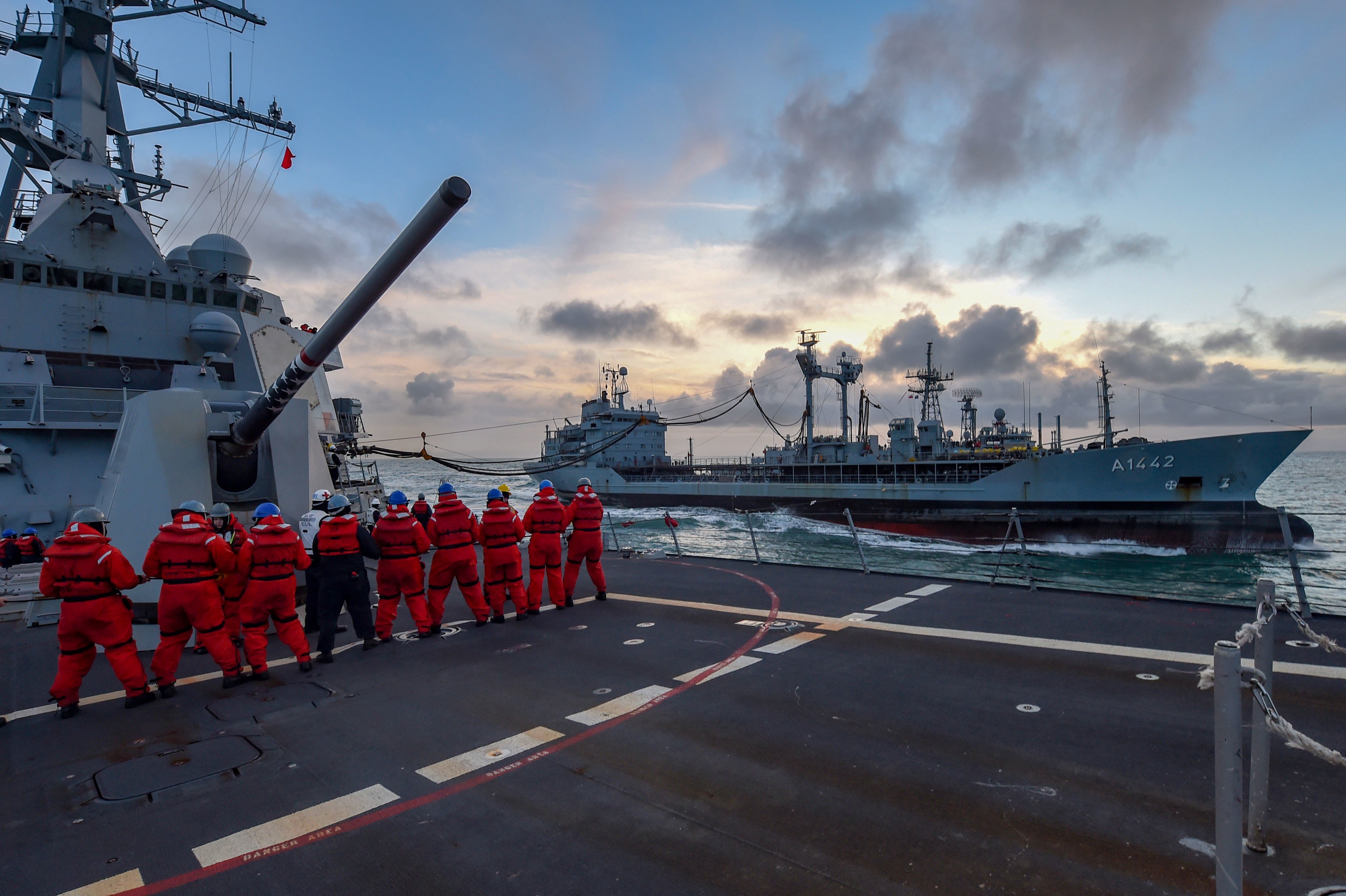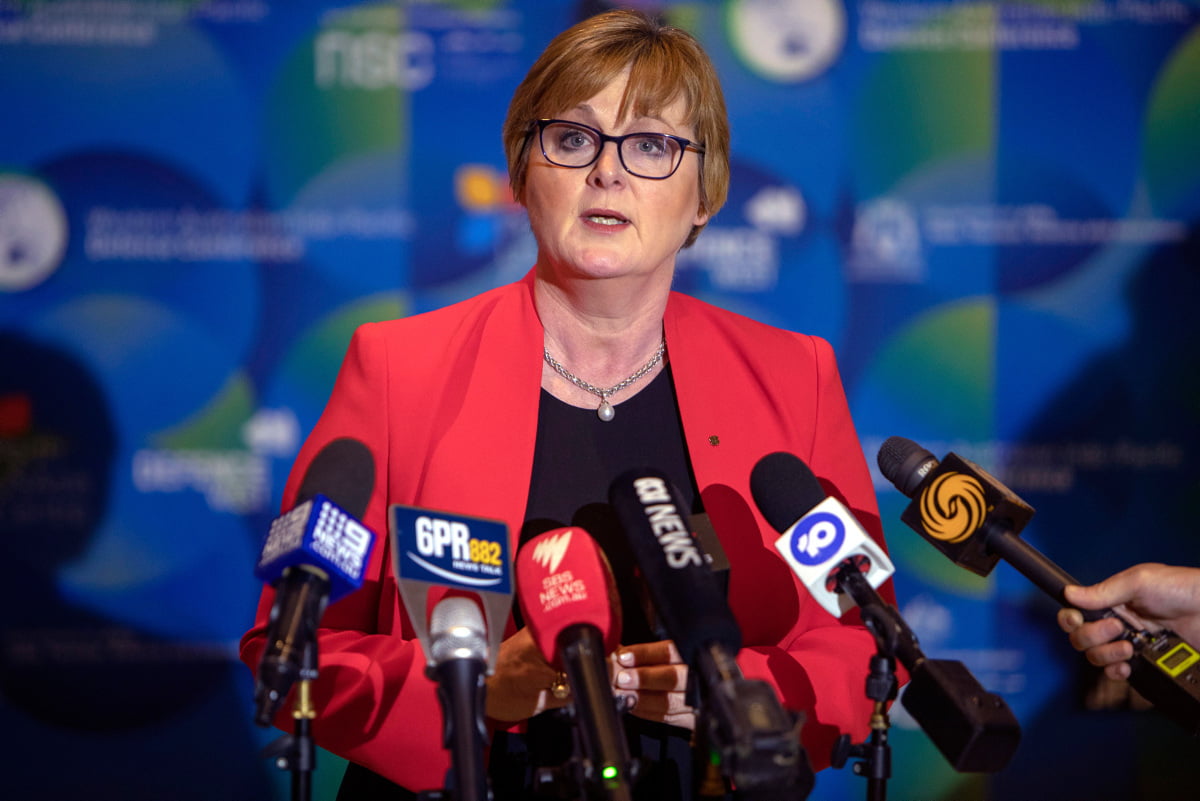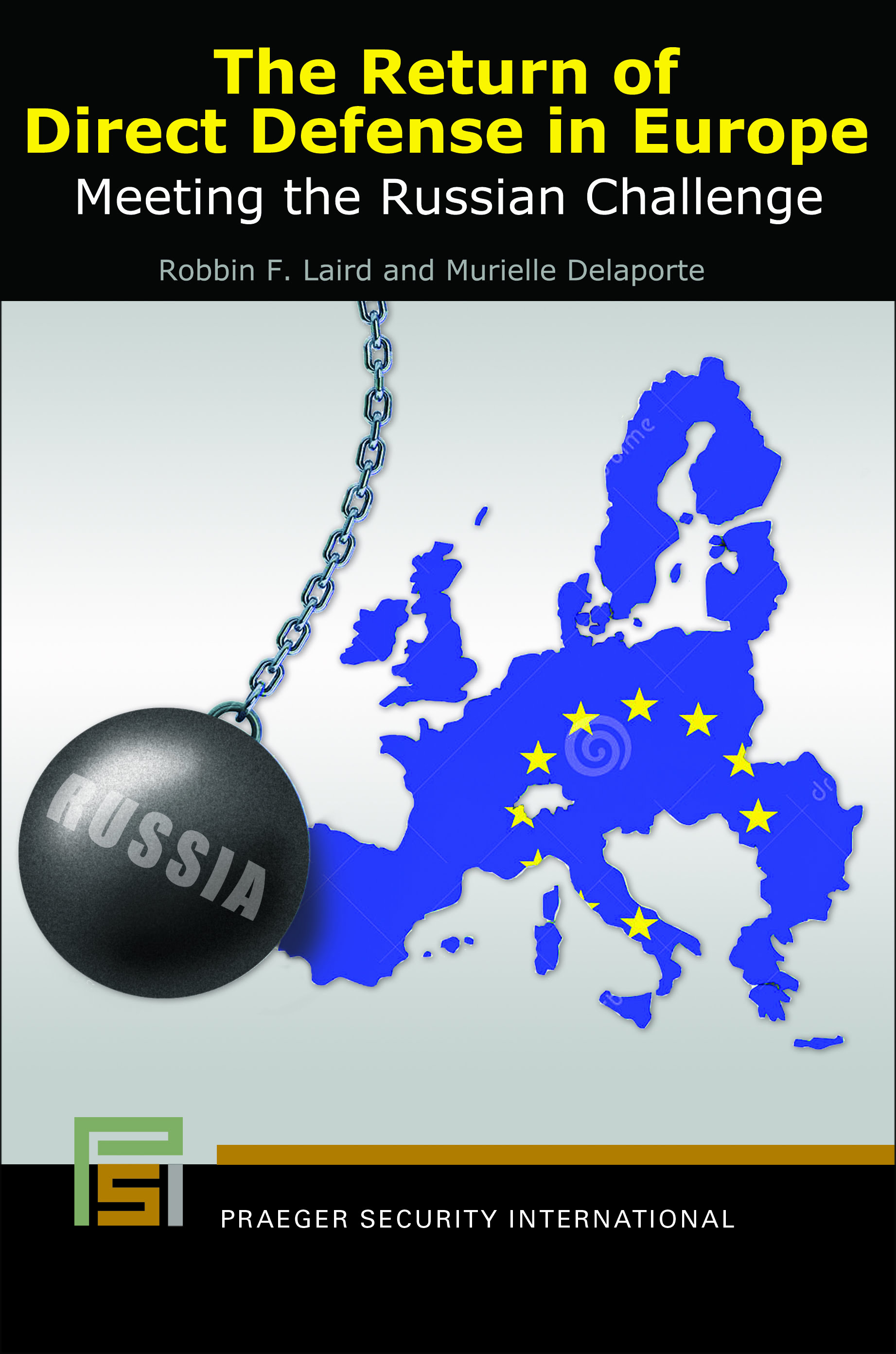In 2016, Vice Admiral James Foggo III, currently commander of U.S. Naval Forces Europe, spoke of the current situation in the North Atlantic as the arrival of the fourth battle of the Atlantic.
“In the early 1990s, the end of the Cold War, the collapse of the Soviet Union, and commentary such as Francis Fukuyama’s landmark essay “The End of History?” led us to believe that our strategic rivalry with Russia and our need to stay one step ahead of Russian capabilities had faded. It has not. Once again, an effective, skilled, and technologically advanced Russian submarine force is challenging us. Russian submarines are prowling the Atlantic, testing our defenses, confronting our command of the seas, and preparing the complex underwater battlespace to give them an edge in any future conflict.”1
In his timely new book, Magnus Nordenman has provided a very comprehensive overview to the fourth battle of the Atlantic.
And in so doing, he does a solid job providing an understanding of how the Russian challenge is both different from and similar to that posed by the Soviet challenge. 2
There are similarities in terms of the importance of the U.S. and Canada being able to project power to reinforce Nordic allies in dealing with the air and naval forces coming from the Kola Peninsula to cut Europe off from its North Atlantic partners. The Kola Peninsula then and now has the highest concentration of military force on the planet. And as such, the priority for both the Soviets and the Russians is the same – provide for anti-access and area denial of the Kola Peninsula.
But the differences are more pronounced. With the collapse of the Soviet Union and the Warsaw Pact countries joining NATO much of the sea and land support capabilities available to the Soviet navy are now not available.
“Today, Russia’s geostrategic situation has changed considerably since the end of the Cold War, but its ambition to be a major maritime power has not. Geographic conditions, however, funnels that maritime ambition toward the north. Post-Soviet Russia has lost much of its littoral territory around the Baltic Sea, with Poland and the Baltic states now fully integrated NATO members. What remains is the outlet at Saint Petersburg through the Gulf of Finland and the Kaliningrad enclave in the southeastern corner of the Baltic Sea.
“The Baltic Sea no longer provides Russia with assured access to the broader maritime domain, given that the other Baltic littoral states are either members of NATO or close partners of the alliance. In a war, the Russian Baltic Sea Fleet would find it impossible to exit the Baltic Sea, but it could, on the other hand, certainly cause NATO and the United States significant frustration if they attempted to reach the Baltic States across the sea.”3
This means that the Kola Peninsula has become even more important, despite an Arctic opening.
And the latter can be seen from a military standpoint as expanding the perimeter of defense for the Kola Peninsula.
The Russian force is also quite different from the Soviet Union.
The Russians have built and are modernizing an integrated missile and subsurface and surface fleet, reinforced by airpower, to provide an expand zone of defense for the Kola Peninsula. They are also shaping more capabilities to ensure that the much reduced port structure, which could receive reinforcements from the U.S. or Canada, could be destroyed in times of severe conflict.
“If a crisis comes, the Russian navy is increasingly well placed and equipped to operate in the far North Atlantic to strike at vital ports, airfields, and command-and-control centers that are needed to bring in U.S. and NATO reinforcements coming across the North Atlantic. If those cross-Atlantic reinforcements were stopped or delayed in coming ashore, NATO and the United States could very well lose a confrontation with Russia in Europe’s east, far away from the shores of the Atlantic.” 4
The arrival of the new Russian capabilities – cruise missiles throughout the fleet with higher quality platforms to deliver missile strikes – has come with the procurement holiday and shift of focus by the U.S. and allies to the land wars in the Middle East. Much of the infrastructure built ashore to support maritime power in the North Atlantic has atrophied or simply disappeared.
“The network of bases and sensors that were established throughout the North Atlantic region and beyond to deal with the challenge of the Soviet navy was truly impressive, and by the end of the Cold War these nodes in NATO’s defense of the North Atlantic ranged from Bermuda in the west and Sigonella in Italy, far into the Mediterranean, and from Iceland and Norway in the north to the Azores in the south. Keflavik, however, stood out as a hub among the other spokes for North Atlantic ASW operations.”5
This has been accompanied by a dramatic shrinkage of air and naval capabilities available to prosecute a Russian fleet as well.
“In aggregate, twenty-five years after the end of the Cold War the naval picture in the North Atlantic had changed radically. European navies were smaller than ever before, but primed and ready to take on missions and threats far from their European waters. The U.S. naval presence in Europe had been more than halved and reoriented toward the Mediterranean and the turbulent Middle East. Sensor networks, basing infrastructure, and command structures intended for the Atlantic and Europe’s north had been reduced or scrapped during the same period. And ASW training was far from the minds of Western navies. Then, in 2014, great-power competition and the specter of future war returned to Europe and the North Atlantic.”6
This state of affairs, the return of the Russian challenge, and the disappearance of the defense systems for the West to deal with a Russian challenge, has led to a a significant challenge for the West. On the one hand, the Nordics have re-focused on their direct defense, and are building out new capabilities to deal with a 21stcentury Russian challenge. And on the other hand, the NATO allies not present in continental Europe, the UK, Canada, and the United States, have refocused on the challenge and are starting the process of rebuilding the capabilities.
The challenge will be to ensure that the two efforts, those by the Nordics and those by the offshore powers, converge to create a credible deterrent capability for North Atlantic defense.
Recent Russian exercises have highlighted the exact nature of the military challenge posed by the Russians. In blunt terms, Russia is seeking to expand its ability to deny the sea and air domain to the United States and its allies well into the North Atlantic. The extended bastion system is not a theoretical construct for it is being exercised by the Russians as well.
“In mid-March 2015, Russia launched an unannounced snap exercise that developed into one of the most far-ranging ever put on by the Russian military. All in all, it included some 80,000 personnel with exercise activities from the Baltic Sea region to the Black Sea and the Pacific. The exercise clearly simulated a conflict with NATO, and the first stage of the exercise was concentrated in and around the Kola Peninsula, where the Northern Fleet was deployed to conduct ASW and surface warfare exercises in the Barents Sea.
“At the same time, Russian strategic bombers performed strikes against simulated targets on the Kola Peninsula, while air defense units simulated defense against incoming air threats. Marine infantry assigned to the Northern Fleet were also mobilized and moved into the Arctic.
“During the second and third phase of the exercise, Russian ground, air, and naval units in the Baltic Sea region and around the Black Sea joined in the exercise to conduct live-fire drills in their area of responsibility.34 General interest media outlets called the Russian focus on the Kola Peninsula during the exercise “utterly baffling,” since the territory there is well away from the heart of Europe and with a low NATO presence in the surrounding region.”
“It is not so baffling if one transplants the events in and around the Kola Peninsula and the Barents Sea in mid-March 2015 into the Atlantic and the Norwegian Sea at some future date. The first phase of the exercise was clearly a rehearsal on how to deploy the extended bastion in order to deter and hinder NATO reinforcements coming into Europe across the Atlantic, strike land-based targets that would support NATO operations in the Atlantic (e.g., as ports, command centers, and intelligence nodes), and provide strategic cover for Russian ground, air, and maritime operations elsewhere. The same type of operation in the North Atlantic was rehearsed again during Russia’s major and recurring exercise Zapad in September 2017.”7
Nordenman provided some core principles when thinking through how to deter the Russians in the context of the fourth battle of the Atlantic and these principles are important ones not just for the maritime domain but in terms of rethinking how to provide for direct defense of Europe in the new global strategic context.
He argued that the return of the great power competition in the North Atlantic was not so much about the American-Russian rivalry as it was about the Euro-North Atlantic working relationship to put relevant capabilities into play, and ones which could be usefully used in crisis management.
“The United States could also help move along naval coalitions of the willing under the umbrella of NATO. Here America could help encourage regional naval leadership by its European friends and allies by having the United Kingdom take a leadership role in the North Atlantic, while, for example, Germany leads in the Baltic Sea and France or Italy takes on a leading role in the Mediterranean.
“This would allow the navies of Europe to more directly specialize and focus on the maritime domains of greatest concern to them. In the case of the North Atlantic, a maritime framework could be imagined that would include the United States, the United Kingdom, Norway, Iceland, Denmark, the Netherlands, and, occasionally, Germany and France.
“This notion of clearer regional responsibility for the maritime domains around Europe is further merited by the many war games that have been played in Washington and elsewhere since 2014, which have all shown that a first response to a crisis with Russia will likely not be a NATO one, but a regional coalition of the willing led by the United States.
“NATO would come into play a short while later as the alliance reaches political consensus that is required for collective action. The North Atlantic Treaty, however, does not bar any one nation or group of nations from coming to the aid of an ally without alliance consensus.”8
This is especially necessary given the different character of the fourth battle of the Atlantic.
“The fourth battle of the Atlantic, like the other three earlier contests, will hinge on the ability to bring to bear high-end naval power in the maritime domain. The fourth battle, however, will also include hybrid elements, with potential attacks against the vital submarine cables across the North Atlantic, disinformation campaigns, aggression in cyberspace in peacetime with implications in the maritime domain, and disruptions of GPS and communications gear by electronic means.It may also include the use of nonmilitary vessels for military purposes, including coast guard ships, fishing boats, and merchantman.”
“Hybrid warfare has proven to be a tough challenge to deal with for the United States and NATO, as the alliance is, at heart, an institution focused on traditional military challenges. In the case of hybrid warfare in the maritime domain, NATO must focus on building maritime infrastructure resilience, find ways to clearly identify and attribute attacks and provocations, and help educate senior leaders on robust decision-making during unclear circumstances. The latter can be accomplished by rigorous political-military wargaming, which would confront decision makers with situations and decision points they may face during a real-world crisis.”9
In short, a key part of shaping a new approach to direct defense in Europe is winning the fourth battle of the Atlantic.
And here the West, although it has significant challenges to face in doing so, has a clear opportunity to leverage new technologies and its collaborative working relationships to win that battle.
“Change is also coming to ASW sensors and the equipment used to interpret and exploit the data collected by them. Big data analytics, using software to process and systematize the immense amounts of information and data points being generated by everything from everyday gadgets to advanced sensors, is rapidly changing businesses and everyday life. Using big data analytics can help decision makers and analysts pick out previously unknown patterns of behavior or irregularities, help predict coming events, or better organize an industrial process.”10
This means that if the U.S. and its allies can provide the territory from which to operate, deploy the new data rich platforms like P-8s, Tritons, F-35s, Aegis and various European systems, as well, then the revolution in sensor technologies, C2 and distributed warfare can play to their benefit. But this will not happen if clear focus is not kept on the nature of the challenge.
Nordenman highlights a key aspect of dealing with the Russian challenge, which is crucial for the Nordics, namely the need to hold the Russian bastion at risk.
For the United States and Canada, it is about reinforcing Europe and holding the Russians at bay, notably with Putin threatening a nuclear strike via his projected new hypersonic missile to be launched via a submarine. But for the Nordics, it is about homeland defense, and not letting the Russians have a free ride to use the Kola peninsula and its extended perimeter defense without a significant capability by the West to attrite and destroy the Russian bastion. When you come out from the land into the air and sea corridors. That is where the West for sure needs to be able to operate its own anti-access and area denial capability. Two can play at this game.
“NATO faces an urgent challenge in the Baltic Sea region, where the Baltic states are small, exposed, and difficult to defend against Russian military aggression. One way to deter Russia from ever seizing one or all of the Baltic states would be to hold key territory or capabilities of high value to Russia at risk.
“One such region is the Kola Peninsula, with the Northern Fleet and the submarine-based nuclear deterrent. The United States should give serious thought to a naval strategy in the far North Atlantic that in many ways harks back to the maritime strategy of the 1980s.
“This approach, however, is not without its potential shortcomings. Many NATO allies would be uneasy with this concept, and there is the real risk of pushing Russia into a “use or lose” decision with its submarine-based nuclear deterrent. Still, the concept bears careful consideration and quiet U.S. conversations with key European allies.”11 Magnus Nordenman, New Battle for the Atlantic(Naval Institute Press. Kindle Edition, p. 201).
The featured photo:
NORTH SEA (Mar. 11, 2019) The guided-missile destroyer USS Gravely (DDG 107) and the guided-missile frigate ORP General K. Pulaski (FrR 232) conduct a replenishment at sea with the German navy replenishment tanker FGS Spessart (A 1442).
Gravely is underway on a regularly-scheduled deployment as the flagship of Standing NATO Maritime Group 1 to conduct maritime operations and provide a continuous maritime capability for NATO in the northern Atlantic.
(U.S. Navy photo by Mass Communication Specialist 2nd Class Mark Andrew Hays/Released)




